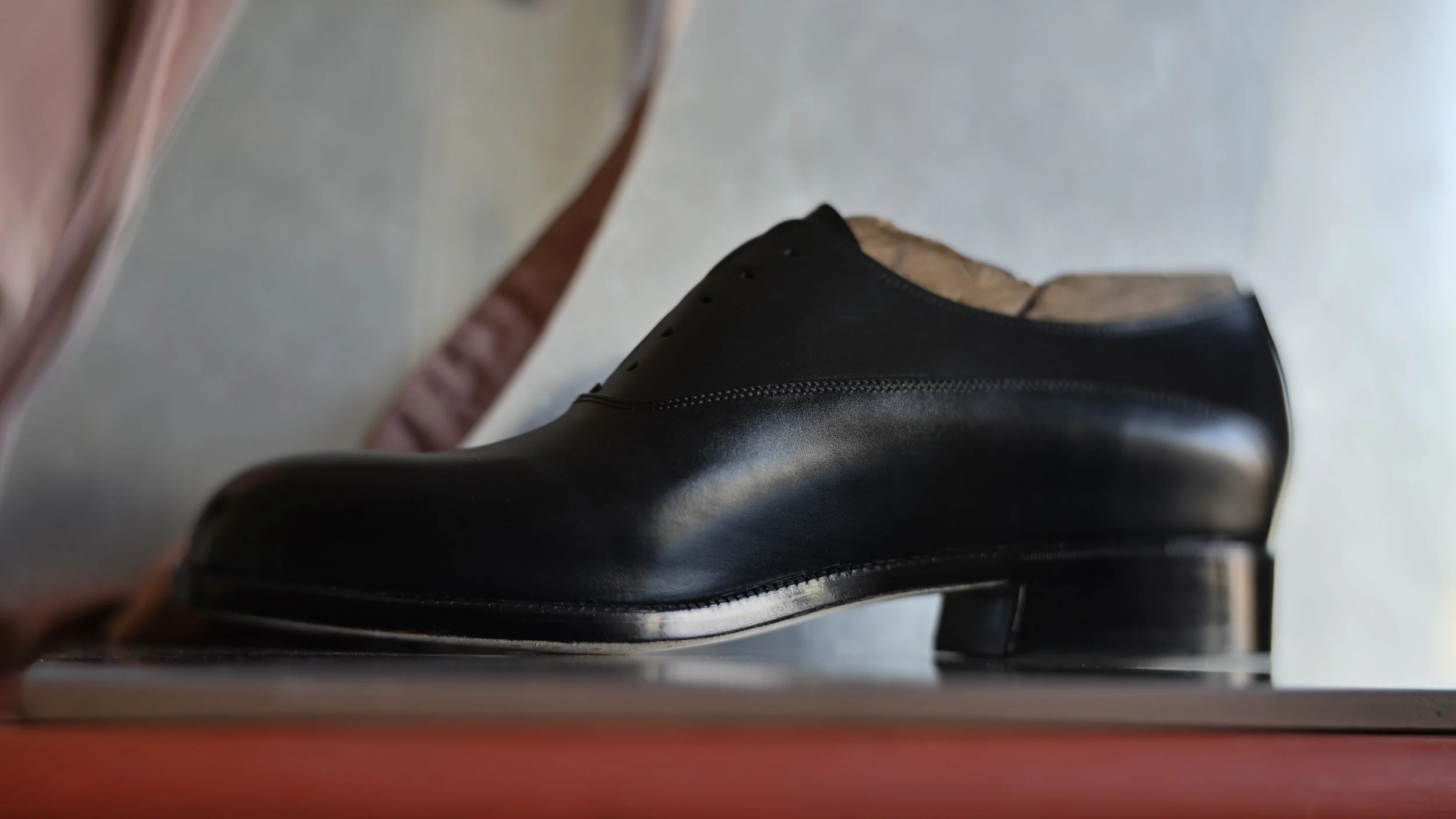The Beauty of Lines
The legendary Polish shoemaker, Brunon Kamiński, often spoke of "lines" as the key to good shoe design. I completely agree with this sentiment. I thought this way long before I took up shoemaking myself. In the years leading up to my current occupation, I was deeply involved in the IT world, and one of my design gurus, Sir Jony Ive, was for me the perfect embodiment of the very definition of good design. Although he is no longer responsible for design at Apple, I still exclusively use their products because I feel his influence on everything. I'm sure we both share the same sentiments about good design, when it comes to literally everything in our shared environment: architecture, vehicles, household appliances, and so on.
Growing up with this mindset, I believe that good design isn't obvious. However, it should seem inevitable if executed with the right approach. For both of us, simplicity is the Holy Grail we seek. Good design immediately clarifies the product's purpose, even before first use. Anything that seems intuitive is well-designed.
This idea of purpose and simplicity makes shoe design timeless.
Classic styles are those that have been with us for over a hundred years. But classic shoemaking isn't just about design.
It also refers to technique. In my opinion, classic shoe construction must have something to do with sewing, pegging, or both. Therefore, I don't consider cemented construction to be classic because, historically, we haven't had sufficiently good adhesive solutions to make it so.
Therefore, classic construction is quite easy to establish. However, there is a fine line between what is classic and what isn't in shoe design. I find this part very interesting.
Let me use an example to explain what I mean. What makes a "full brogue derby" classic? To qualify, they must feature a wingtip toe, a five-part upper, decorative perforations, alternatively serrations along the edges. But is this simple? Is it inevitable? Does it serves any function? The brogue design itself made sense before concrete sidewalks became ubiquitous. Today, these elements are only the character and appearance. The legacy.
This modernized quintessence of classic solutions no longer serves any practical purpose today. Therefore, their status as a "classic" is, in my opinion, questionable.
Personally, I believe that a classic design is a combination of traditional construction and structured upper lines. A truly classic design eliminates elements that are not essential to its functioning. Getting to the point, we could say that the ultimate classic design is a seamless wholecut style of shoes. While I believe this is true, footwear would be terribly boring if reduced to pure functionality. This makes the lines useful and, in a sense, essential.
My work on this pair of oxfords inspired me to write this blog post. This design is a perfect illustration of classic elegance and taste. It's also a very rare example of fantastic upper design. I created this pair as part of my full-time job for the Warsaw workshop, so neither the shape of the last nor the upper design are mine. But when I first saw this design, I immediately thought, "This is so classic!" While the lines are a bit controversial, the beautiful curves at the back makes the shoe feel attractive yet simple.
Lines are the first thing I analyze when looking at the work of other shoemakers. The craftsmanship of the sole and the finishing touches are other aspects I consider.
Lines are the key to my heart, and that's precisely why I love certain shoemakers.
The amount of work and attention to detail only serve to confirm my opinion of a given craftsman. I always look for logic and meaning in the chosen solutions. How the lines of the upper correspond with the elements of the sole, for example. These kinds of details create a complete picture of a well-executed shoemaker's work. Lines are the key to creating a truly unique pair of shoes.
Thus, the key to beauty lies in the lines. A certain artistic flair in shoemaking is based on the use of interesting proportions and intriguing curves. When we add to this the sophisticated techniques of combining the elements of the upper together, we gain a comprehensive insight into the individual style of a given shoemaker.


